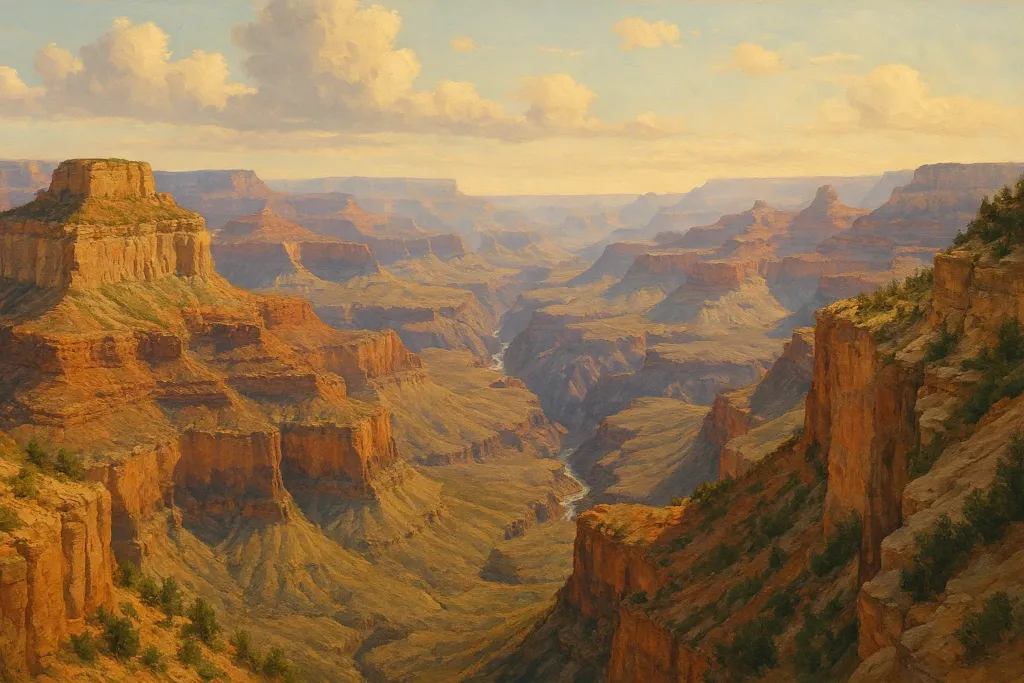The Grand Canyon is an open‑air geology textbook. It isn’t the world’s deepest, but its mix of vast length, dramatic relief, and uniquely legible rock record makes it iconic.
Geography and scale
The canyon stretches about 446 km long, up to 29 km wide, with local relief roughly 1.6–1.8 km. The national park covers ~4,926 km²—nearly two times the area of Moscow—giving a tangible sense of the landscape’s scale.
Depth, length, and width
“A mile deep” is literal: the drop from rim to river exceeds 1.6 km. Width varies from a few kilometers to nearly 30, and the 446‑km length reads like a half‑day train journey of continuous panoramas.
Geologic age and rock record
The walls expose almost two billion years: basement rocks near 1.8–2.0 billion years old capped by younger layers down to ~270 million years. Few places let you trace Earth’s eras vertically with such clarity.
River and erosion
The river carved the canyon over millions of years, a scalpel cutting as the plateau rose. Today, upstream dams modulate flows, but terraces, benches, and meanders still tell a time‑lapse story etched in stone.
Climate and elevation
Rims sit hundreds of meters above the river: cool conifers above, desert heat below. A single day’s descent can swing temperatures by 10–20 °C, carrying you through multiple life zones.
Records and comparisons
Depth greater than two Burj Khalifas stacked gives instant scale. The park’s area is about two Moscows, and its time slice spans seven times the age of dinosaurs. A rim‑to‑rim hike is ~40 km—akin to a city marathon with serious elevation gain.
Why it matters
These numbers don’t just wow—they explain Earth. Layered stone reveals past seas and climates; massive relief showcases tectonic power; and city‑and‑skyscraper analogies translate abstractions into human terms.
Numbers to remember
446 km long, up to 29 km wide, ~1.6–1.8 km deep. About 4,926 km² of protected land, billions of years in rock, and double‑digit temperature swings between rim and river in a day. Every kilometer is a chapter.
Conservation
A World Heritage site demands care. Staying on trails, respecting water and silence, and minimizing impact keeps this textbook open for the future.
- Haiti, unfiltered: how to travel smart and fall in love with the country
- 12 of the best places to visit in April in Europe: beaches, Easter, cities, and adventures
- Distant Storms Create Dangerous Surf at East Coast Beaches
- Georgia
- Island
- Beach Extreme: World Regions with the Most Biting Sandflies
- Hiroshima’s nuclear blast: how tragedy reshaped travel routes
- Turtle facts
- Born for battle: the world’s most warlike cultures
- Liechtenstein
- Tourism crime in Amsterdam: how to avoid becoming a victim
- Pakistan
- Paradise for Sea Lovers: World Regions with the Most Swimming Beaches
- Derbent (Dagestan, Russia)
- Barack Obama: tourist places of his life and travels
- Great lakes
- Bali
- Pura Vida on the Road: the nuances of traveling Costa Rica
- Tourist places where Hemingway went
- Issyk-Kul











